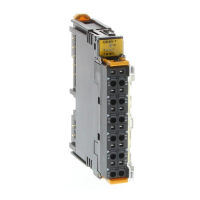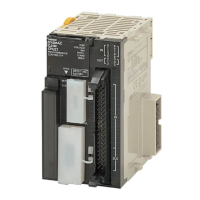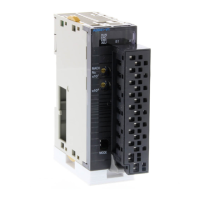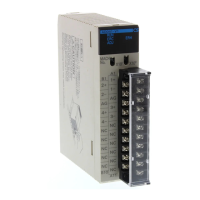337
Appendix E
Precautions When Connecting
Two-wire DC Sensors
When using a two-wire Sensor with a Communications Unit using DC inputs, check that the following condi-
tions have been met. Failure to meet these conditions may result in operating errors.
Relationship between a DC Input-type Communications Unit’s
ON Voltage and a Sensor’s Residual Voltage
V
ON
≤ V
CC
− V
R
V
CC
: I/O power supply voltage (The allowable power supply voltage range is 20.4 to 26.4 V, so 20.4 V will
be used here to allow for the worst possible conditions.)
V
ON
: ON voltage for a Communications Unit with DC Inputs
V
R
: Sensor's output residual voltage
It is sometimes possible to satisfy the above equation by adjusting the I/O power supply voltage (V
CC
) to
26.4 V.
Relationship between a DC Input-type Communications Unit’s
ON Current and a Sensor’s Control Output (Load Current)
I
OUT
(min) ≤ I
ON
≤ I
OUT
(max.)
I
OUT
: Sensor control output (load current)
I
ON
: Communications Unit ON current
I
ON
= (V
CC
− V
R
− V
F
)/R
IN
V
F
: Internal residual voltage of a Communications Unit with DC Inputs
R
IN
: Input impedance of a Communications Unit with DC Inputs
When I
ON
is smaller than I
OUT
(min), connect a bleeder resistor R.
The bleeder resistor constant can be calculated using the following equation.
R ≤ (V
CC
− V
R
)/(I
OUT
(min.) − I
ON
)
Power W ≥ (V
CC
− V
R
)
2
/R × 4 [allowable margin]
R
V
CC
V
R
R
IN
2-wire
Sensor
DC Input
Unit

